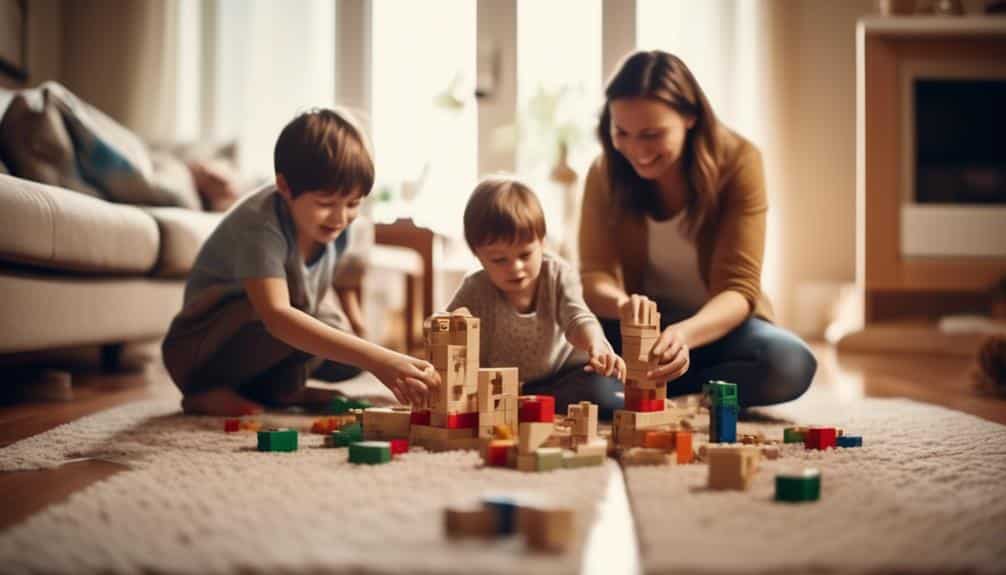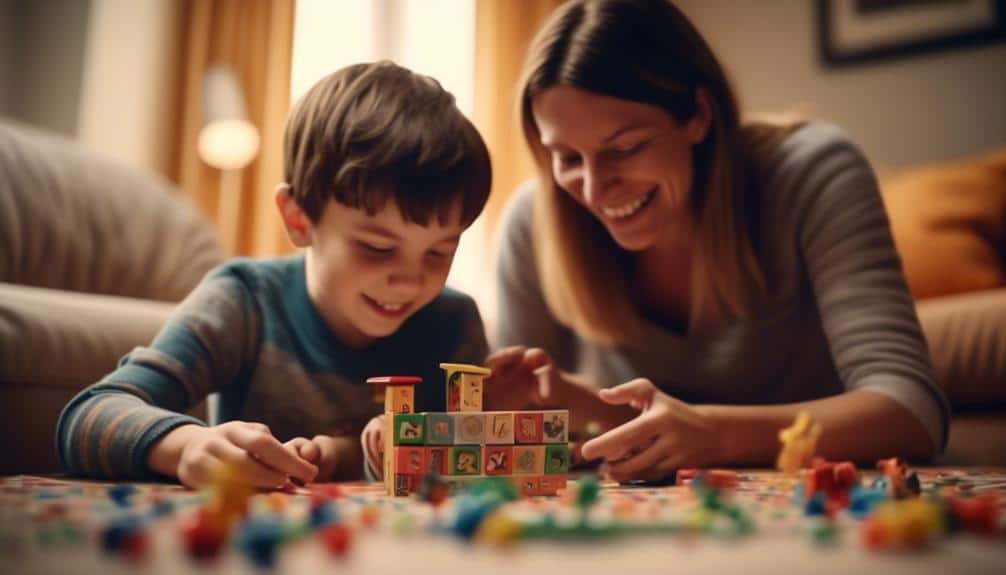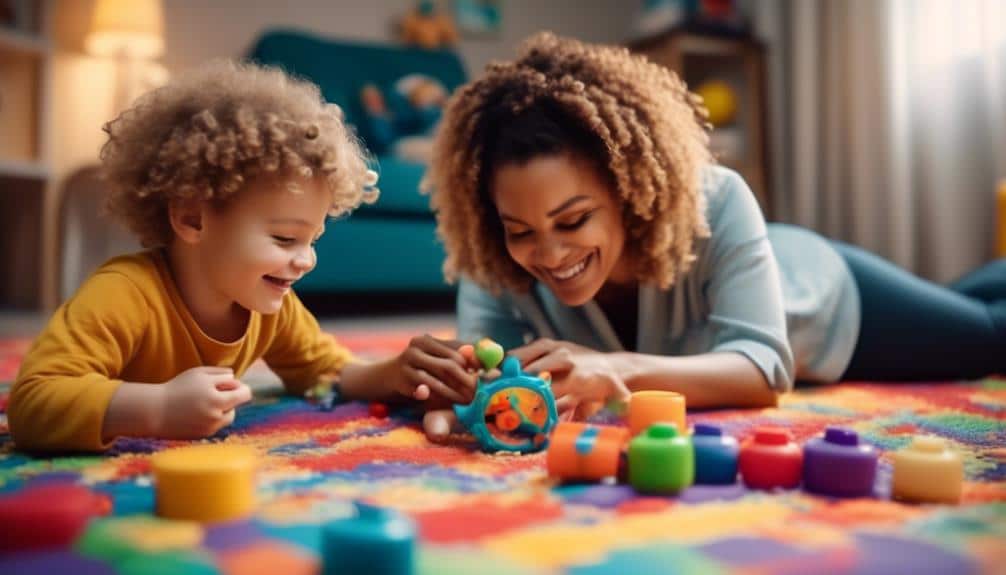When contemplating intervention strategies for children with autism, the compelling option of DIRFloortime for autism emerges, highlighting the importance of emotional and relational development. This approach, grounded in the Developmental, Individual-differences, & Relationship-based model, fosters essential capacities such as self-regulation, engagement, and communication within a nurturing and tailored therapeutic relationship. As professionals seek to support children in reaching their full potential, the adaptability of DIRFloortime to accommodate a diverse range of individual profiles and family dynamics is particularly noteworthy. Moreover, its collaborative nature involves caregivers directly, empowering them with strategies to facilitate their child’s development in everyday interactions.
The question then arises: what sets DIRFloortime apart in its efficacy and approach, and how can its impact on children’s developmental trajectories truly be understood? To explore the depths of these inquiries, one must consider the intricate nuances and evidence that underscore this distinctive intervention strategy.
Key Takeaways
- DIRFloortime is a relationship-based approach to autism intervention focusing on emotional and intellectual growth through joyful play and guided interaction.
- Floortime encourages interactive dialogues to expand communication and integrates sensory and motor experiences to enhance communication.
- Floortime fosters emotional growth through engaging and respectful interactions, promoting emotional regulation and interpersonal communication skills.
- Building healthy relationships is crucial in effective autism intervention, and Floortime emphasizes fostering emotional connections.
Understanding DIRFloortime
DIRFloortime is a comprehensive, relationship-based approach to autism intervention that fosters emotional and intellectual growth through joyful play and guided interaction. This method, integral to the Developmental Individual-difference Relationship-based (DIR) model, is particularly tailored for children with autism spectrum disorders (ASD). By prioritizing self-regulation, engagement, and intricate communication, DIRFloortime aims to assist children in achieving and surpassing developmental milestones.
Therapy sessions, ranging from two to five hours daily, are uniquely designed to immerse the parent or provider in the child’s world by following the child’s lead. This approach nurtures a child’s innate curiosity and desire to connect, transforming these interactions into opportunities for developmental progress. Emphasizing play-based interactions, DIRFloortime facilitates enhancing sensory, motor, emotional, cognitive, and communication skills in a warm and responsive environment.
As an evidence-based practice, DIRFloortime is committed to an individualized therapeutic strategy that leverages a child’s strengths and interests. This developmental approach is practical and resonates with empathy, capturing the essence of serving children with ASD and their families by meeting them where they are and guiding them toward where they can be.
Core Techniques Explained

To effectively support children with ASD, Floortime therapy employs several core techniques that are instrumental in enhancing their social, emotional, and intellectual capabilities. At the heart of Floortime is the development of ‘circles of communication,’ where therapists and parents engage with children through back-and-forth interactions that are foundational to all future learning and growth. This approach nurtures the child’s emotional development by creating a safe space for them to express and understand their feelings within the context of a relationship.
The principle of ‘follow the child’s lead’ is central to the technique. This involves observing the child’s natural interests and using them as a springboard for interaction. Doing so makes the child feel understood and acknowledged, fostering trust and a deeper engagement. It is a respectful and empowering method that places the child at the center of their development journey.
Professionals trained in Floortime adapt strategies to align with each child’s unique developmental level, ensuring the therapy is responsive and appropriate. Parents are also integral to the process, receiving guidance on effectively implementing Floortime principles at home and reinforcing the therapeutic benefits across various settings. This unified approach amplifies the potential for significant progress in child development.
Enhancing Communication Skills

Building upon the foundational techniques of DIRFloortime, enhancing communication skills in children with autism becomes a central focus, aiming to broaden their abilities to connect and interact meaningfully with others. The approach is deeply rooted in the belief that the development of these skills is fundamental to the overall growth of autistic children, touching upon their emotional functioning and capacity for relationship-building.
To effectively foster communication skills through DIRFloortime, consider the following key strategies:
- Encouraging Interactive Dialogues: Floortime sessions are designed to create opportunities for children to engage in back-and-forth exchanges, thereby expanding their circles of communication.
- Integrating Sensory and Motor Experiences: By intertwining sensory, motor, and emotional elements, children are taught to communicate more effectively, often in conjunction with speech therapy practices.
- Emphasizing Problem-Solving Interactions: These interactions teach new ways of communication and support emotional and cognitive development, helping children express their needs and thoughts.
DIRFloortime is more than just an intervention; it is a journey toward unlocking the communicative potential within each child. Through personalized, playful, and empathetic engagement, children learn to navigate the complexities of communication, ensuring they are heard and understood.
Encouraging Emotional Development

Fostering emotional growth in children, DIRFloortime employs engaging and respectful interactions that promote emotional regulation and interpersonal communication skills. This therapeutic approach, deeply rooted in the Developmental, Individual-differences, & Relationship-based model (DIR) formulated by Dr. Stanley Greenspan, emphasizes the importance of nurturing emotional development through play. It recognizes that each child with autism is unique and thus tailors strategies to meet their individual developmental and emotional needs.
Floortime creates opportunities for children to express and explore their emotions in a safe and supportive environment by building a solid foundation of trust and understanding within the child-caregiver relationship. Professionals such as speech therapists, occupational therapists, and educators, who are trained in this method, facilitate this process by joining in the child’s play at their level and expanding upon it to challenge the child warmly and empathetically.
The adaptability of Floortime allows it to be beneficial beyond the scope of autism, helping any child develop robust emotional regulation skills. As children progress, they learn to navigate their emotional landscape, leading to improved engagement, communication, and problem-solving abilities, essential for lifelong learning and relationship building.
Building Healthy Relationships

In the context of DIRFloortime, building healthy relationships is a cornerstone of effective autism intervention. The therapy encourages children to form meaningful interactions with their caregivers by emphasizing fostering emotional connections. Enhancing social reciprocity and nurturing family engagement is critical in supporting the child’s relational growth and overall developmental progress.
Fostering Emotional Connections
Cultivating emotional connections through DIRFloortime, caregivers and children embark on a journey that harnesses the power of their innate interests and passions to strengthen their interpersonal bonds. This approach is not only beneficial for helping autistic individuals but is also a means of meeting the child where they are emotionally and developmentally. Here are three key aspects to consider:
- Following the child’s lead: Engage with the child by entering their world and building upon what naturally interests them.
- Emotional attunement: Recognize and respond to the child’s emotional cues, fostering understanding and security.
- Individualized engagement: Tailor interactions to fit the child’s unique developmental level and sensory profile, ensuring therapy is relevant and impactful.
Enhancing Social Reciprocity
Building upon the foundation of emotional connections, DIRFloortime also places a significant emphasis on enhancing social reciprocity to nurture the development of healthy relationships. Recognizing the unique developmental level of each child, Floortime therapy is inherently child-based, valuing the individual interests and abilities that guide the therapeutic process. Through sustained, playful interactions, therapists and caregivers engage in back-and-forth play for several hours a day, deliberately fostering two-way communication. This autism intervention strategy methodically expands a child’s circles of communication, gradually building the complex communication skills vital for social reciprocity. By participating in shared joyful moments, children learn the ebb and flow of relationships, an essential step towards cultivating lasting social connections and thriving in a communal environment.
Nurturing Family Engagement
Floortime therapy actively strengthens family ties by encouraging parents to immerse themselves in their children’s world through playful interaction and shared experiences. This approach to Autism Treatment is a cornerstone of the Intervention program developed by Dr. Serena Wieder, which focuses on:
- Engaging Play: Using the natural language of play, Floortime fosters emotional connections between parents and children.
- Understanding Passions: Parents learn to appreciate and nurture their children’s unique interests, enhancing family engagement.
- Expanding Communication: Families grow closer as parents actively participate in increasing their children’s communication circles.
Tailoring Individual Sessions

Recognizing that each child with autism is unique, DIRFloortime sessions are meticulously tailored to harness individual strengths and interests, creating a therapeutic environment that is engaging and suited to the child’s developmental stage. By focusing on the child’s development, therapists working within the DIRFloortime framework ensure that each session contributes meaningfully to the child’s emotional and cognitive growth.
Individual Difference is a cornerstone of this approach, where activities and interactions are adapted to meet the child on their terms, fostering a sense of autonomy and self-expression. This personalized method helps to build a solid therapeutic relationship, which is vital for the child’s progress on the autism spectrum.
The flexibility inherent in tailoring individual sessions allows therapists and parents to respond dynamically to the child’s evolving needs. Through such customized engagement, children are more likely to connect with others and their environment in natural and motivating ways. This dynamic and responsive approach to intervention makes Floortime a profoundly personalized and nurturing experience, promoting development that respects each child’s unique journey.
Measuring Progress

Evaluating the effectiveness of DIRFloortime involves carefully assessing the child’s growing abilities in self-regulation, engagement, and communicative interactions. This developmental approach is particularly sensitive to the nuanced progress that an autistic child makes over time. It is about achieving specific milestones and fostering a robust emotional and psychological growth foundation.
When discussing measuring progress within DIRFloortime, it is essential to consider the following:
- The observable advances in the child’s capacity for self-regulation and how they manage sensory input and emotions.
- The child’s development in forming meaningful engagements with others, including the initiation of interactions and response to social cues.
- Enhancements in the complexity and depth of communication signifying a richer, two-way interactional pattern.
Professionals and families engaging with DIRFloortime are attuned to the subtle changes in a child’s developmental trajectory. The goal is to support the child in forming a stronger connection with their environment and the people within it. Progress in Floortime is multifaceted and reflects significant strides in sensory, motor, emotional, and cognitive domains, contributing to a holistic view of the child’s development.
Integrating Into Daily Routines

Building on the assessment of a child’s progress in self-regulation, engagement, and communication, integrating DIRFloortime into daily routines provides a seamless and practical avenue for continued development. This method of autism intervention is uniquely adaptable, allowing parents and caregivers to weave Floortime activities into the fabric of everyday life. By doing so, children with autism spectrum disorders experience therapeutic interactions during moments as routine as playtime and mealtime.
The beauty of this integration lies in its simplicity and power to promote consistent engagement. As children with autism spectrum participate in these structured yet flexible interactions, they practice and generalize crucial skills within various contexts. This not only supports holistic development but also ensures that learning is deeply rooted in real-life experiences, enhancing the overall effectiveness of the intervention.
Furthermore, this approach fosters natural and meaningful interactions that resonate with the child’s daily experiences. In familiar settings, where comfort and security are already established, integrating DIRFloortime encourages the growth of a deepened connection between the child and their caregivers. This connection is the cornerstone of a nurturing environment for the child’s developmental journey.
Training for Parents and Caregivers

Training for parents and caregivers is critical to the DIRFloortime approach, enabling them to participate actively in their child’s developmental journey. By acquiring DIRFloortime strategies through various resources and training programs, families can create a nurturing and responsive home environment that reinforces therapeutic goals. Such empowerment facilitates skill development and relationship-building outside structured therapy sessions, ensuring consistent child growth support.
Empowering Family Involvement
Empowering family involvement through DIRFloortime training equips parents and caregivers with the necessary skills to effectively engage in therapy sessions, fostering their child’s self-regulation, engagement, and communication growth. This approach, developed by Dr. Serena Wieder and other professionals working in the field, emphasizes families’ critical role in autism intervention.
Critical aspects of empowering family involvement include:
- Active Participation: Parents learn to join their child in play-based activities attuned to their child’s unique developmental profile.
- Educational Empowerment: Families gain insights into the principles of Floortime, enabling them to understand and respond to their child’s behavior constructively.
- Routine Integration: Training provides strategies for incorporating Floortime techniques into everyday life, promoting consistent developmental support.
Skills Transfer at Home
Through the Skills Transfer at Home initiative, parents and caregivers acquire practical techniques to seamlessly integrate DIRFloortime strategies into daily interactions with their children, enhancing developmental progress within the comfort and familiarity of their home environment. This essential component of autism intervention equips families with the ability to support their child’s sensory needs and play preferences. By engaging in play therapy techniques and following the child’s lead, parents learn to understand their child’s unique developmental level. Parents’ training in Floortime promotes engagement, problem-solving, and communication skills. The aim is to empower caregivers to apply Floortime principles and techniques from therapy sessions to enrich every interaction, fostering a nurturing space for the child’s development and ensuring skills transfer at home.
Comparing Intervention Approaches

When considering various autism intervention strategies, it is essential to understand how the principles and practices of DIRFloortime compare with other established therapies, such as Applied Behavior Analysis (ABA).
While both Floortime and ABA are used as therapy for autism, they differ in several key aspects:
- Underlying Philosophy: Floortime is grounded in a developmental model emphasizing fostering emotional and social growth through interactive play. It is relationship-based and works on expanding communication in a naturalistic setting. In contrast, ABA is based on behavioral principles that focus on modifying specific behaviors through reinforcement strategies.
- Therapeutic Environment: Floortime sessions typically take place in a setting that is quiet and free from distractions, where child-led play is used to encourage back-and-forth interaction. This approach contrasts with the more structured environment of ABA, where discrete trials and structured tasks occur daily.
- Role of the Practitioner: In Floortime, practitioners—whether psychologists, educators, or caregivers—serve as play partners and are trained to follow the child’s lead. They engage in activities the child finds enjoyable, promoting natural development. ABA therapists, on the other hand, often take on a more directive role, implementing specific strategies to shape and reward desired behaviors.
In comparing intervention approaches, it’s essential to consider the individual needs of each child with autism, as different strategies might be more effective for other children.
Frequently Asked Questions
What Are the Benefits of DIRFloortime?
DIRFloortime offers personalized therapy, enhancing communication and emotional and cognitive growth. It strengthens parent-child understanding, supports self-regulation, encourages meaningful interactions, and is adaptable to individual needs and developmental stages.
Why Is Floortime Better Than ABA?
Floortime, emphasizing emotional development through relational play, often resonates more with children, offering a personalized approach that nurtures self-regulation and communication, in contrast to the structured methodology of ABA.
How Effective Is DIRFloortime for Autism?
Floortime therapy has demonstrated efficacy for autism, with research showing significant developmental advancements, including improved communication and emotional skills, crucial for children’s growth and engagement with their environment.
What Are the Benefits of DIRFloortime?
The benefits of Floortime include enhancing self-regulation, fostering engagement and communication, and improving problem-solving abilities through individualized, relationship-based play that is attuned to a child’s unique strengths and developmental needs.
Conclusion
Autism spectrum disorder presents some developmental challenges for children, but the Greenspan developmental approach is an effective treatment for these challenges. The approach prioritizes emotional connections and an individualized approach to therapy to help children reach their fullest potential. Parents, pediatric occupational therapists, and speech therapists play a role in this therapy program. The treatment program includes various therapy services, such as behavioral, speech, and physical therapy. The program is designed to help children with autism spectrum disorder develop their social skills, communication skills, and daily living skills, as well as their motor skills and cognitive development.
The therapy sessions involve Applied Behavior Analysis and other forms of therapy to help children develop positive behaviors and thinking patterns. The therapy program is tailored to meet the individual needs of each child, with a focus on social-emotional development and healthy development.
A cross-sectional study found that the developmental individual-difference relationship-based model is effective for children with autism spectrum disorder. The study showed that this approach improves social interaction, parent-child interaction, and the child’s understanding of the natural environment. The therapy program is designed to help children develop their developmental and emotional capacities, including symbolic thinking, reflective thinking, and deep understanding. The approach also focuses on healthy emotional connections and the inclusion criteria for children.
The Greenspan approach is a holistic and cost-effective approach that involves a multi-disciplinary team of professionals, including child psychologists, behavior therapists, and physical and occupational therapists. The strategy involves a child-centered, wholly child-led approach, focusing on meaningful interactions between the child and their therapist. The therapy program is designed to help children develop adaptive behavior, emotional, and daily skills. The program also measures treatment effects and outcomes through correlational, pilot, and prospective follow-up studies.
The Greenspan approach is a foundational framework for intervention programs for neurodivergent children. It is an option for therapy that can help children make substantial progress in their holistic development. The approach is supported by research and ethical approval and is designed to be comfortable and engaging for children. It is an effective treatment method that can help children with autism spectrum disorder reach their fullest potential.


Recent Comments